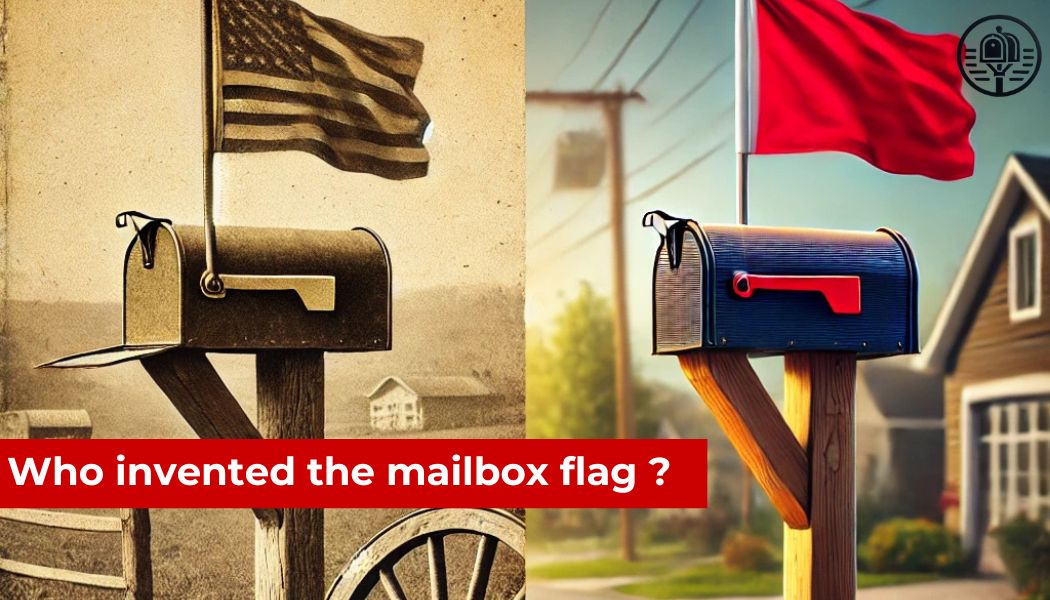The mailbox flag is a small yet essential feature of residential mailboxes in many parts of the world. It serves a practical purpose, indicating to mail carriers when outgoing mail is ready for pickup. But who invented this ingenious tool? The history of the mailbox flag is both fascinating and a testament to human innovation, solving everyday problems with simple yet effective solutions.
In this article, we’ll explore the origins of the mailbox flag, its inventor, and why it remains a vital component of modern mailboxes.
The Origin of the Mailbox Flag
The mailbox flag as we know it today can trace its origins to the late 19th and early 20th centuries when the United States Postal Service (USPS) was expanding its rural delivery system. This expansion brought mail services to remote areas, where residents needed an efficient way to signal outgoing mail to postal carriers.
The mailbox flag was created as a simple solution to this problem, enabling homeowners to alert mail carriers without unnecessary trips to the mailbox.
Who Invented the Mailbox Flag?
While there is no singular, universally recognized inventor of the mailbox flag, its design is widely attributed to U.S. postal workers and early mailbox manufacturers. The patent history sheds some light on its evolution:
Albert Potts’ Contribution
In 1858, Albert Potts filed a patent for a street letterbox, an early precursor to the modern mailbox. Although this design didn’t include a flag, it laid the groundwork for innovations in mail collection systems.
George Becket’s Invention
The first significant mention of a mailbox signal device came from George Becket, who patented a design in 1912. Becket’s invention was a signal arm attached to a mailbox, which could be raised to notify the postal carrier of outgoing mail.
Rural Free Delivery and the Flag’s Development
The mailbox flag became a standard feature during the Rural Free Delivery (RFD) program in the early 20th century. As mail delivery services expanded, the flag’s design evolved to meet the needs of rural communities. While no single inventor can claim full credit, it was the collaboration of inventors, manufacturers, and postal workers that led to its widespread adoption.
The Evolution of the Mailbox Flag
Over time, the mailbox flag underwent several design improvements to enhance its functionality and durability:
- Material Upgrades: Early flags were made from wood or metal, while modern versions use lightweight, weather-resistant materials like plastic or aluminum.
- Color Standardization: The iconic red color was introduced to make the flag easily visible, even from a distance.
- Ease of Use: Designs became more user-friendly, allowing the flag to be raised and lowered with minimal effort.
These advancements have ensured the mailbox flag remains a practical and reliable tool for mail communication.
Why Is the Mailbox Flag Important?
The mailbox flag is more than just a convenience; it plays a vital role in the efficiency of mail delivery systems:
- Saves Time for Mail Carriers: By signaling outgoing mail, the flag eliminates unnecessary stops, improving delivery efficiency.
- Improves Communication: The flag serves as a clear, non-verbal method of communication between residents and postal workers.
- Enhances Accessibility: In rural areas with long driveways or remote mailboxes, the flag ensures outgoing mail isn’t overlooked.
The Modern Mailbox Flag
Today, the mailbox flag is a standard feature on residential mailboxes in the United States and several other countries. Its design remains largely unchanged, a testament to its effectiveness. Some modern mailboxes incorporate digital or smart flag systems that send alerts to homeowners or postal workers, blending traditional functionality with modern technology. If you'd like a mailbox flag, take a look at our dedicated collection!
FAQ: Who Invented the Mailbox Flag?
Q: Was the mailbox flag invented by a single person?
A: No, the invention of the mailbox flag is credited to multiple contributors, including George Becket and early mailbox manufacturers during the RFD era.
Q: Why is the mailbox flag red?
A: The red color was chosen for visibility, ensuring that mail carriers can easily spot raised flags from a distance.
Q: Are mailbox flags used worldwide?
A: While common in the United States and some other countries, mailbox flags are not universally used. Their necessity depends on local mail delivery practices.
Q: Can mailbox flags be replaced or upgraded?
A: Yes, replacement flags are widely available and can be easily installed on most mailboxes. Some modern flags even incorporate digital features.
Q: Do all mailboxes have flags?
A: No, only mailboxes designed for outgoing mail typically have flags. Some urban or shared mailboxes do not require them.
Q: When did the mailbox flag become a standard feature?
A: The mailbox flag became widely adopted during the early 20th century, coinciding with the Rural Free Delivery program.
Conclusion
The mailbox flag is a brilliant example of how simple innovations can have a lasting impact. While its exact origins involve multiple contributors, the flag has become an indispensable part of mail delivery systems, particularly in rural areas. Its design has stood the test of time, proving that functionality and simplicity often go hand in hand.
Whether you rely on a traditional mailbox flag or are exploring modern, tech-enabled options, this small but mighty tool continues to make a big difference in everyday life.

